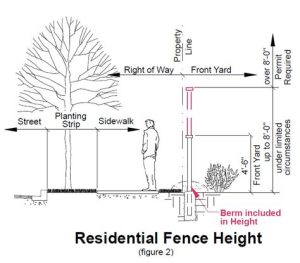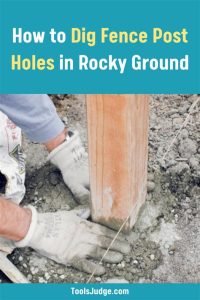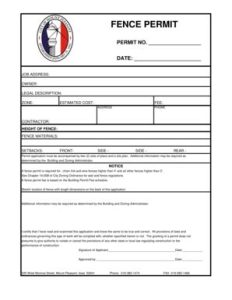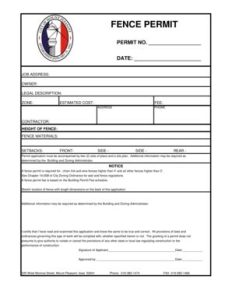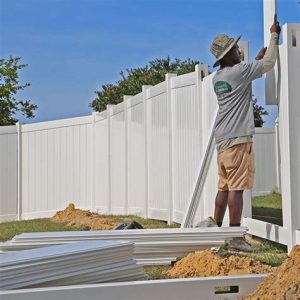Explore city regulations, permit requirements, and legal risks of unauthorized fence installation to avoid costly repercussions and ensure compliance.Installing a fence can enhance your property’s privacy, security, and aesthetic appeal. However, before you start digging and erecting barriers, it’s crucial to consider the legal implications of your actions. Many cities have specific regulations governing fence installations, often requiring permits to ensure compliance with zoning laws and neighborhood guidelines. Neglecting to obtain the necessary permits can lead to serious risks and legal complications, not to mention the financial burdens that can arise from fines and required removals. In this blog post, we will explore city regulations regarding fence installations, the specific permit requirements, the potential risks of proceeding without permission, and the costly repercussions of ignoring these important legalities. Understanding the consequences will not only save you time and money but will also ensure that your home remains a safe and welcoming place.
Understanding city regulations on fence installation
When considering a fence installation, it is crucial to first understand the city regulations that govern such projects. Regulations can vary greatly from one municipality to another, making it essential for homeowners to research local laws to avoid any potential complications.
Most cities require homeowners to obtain a fence permit before starting construction. This typically involves submitting an application that details the fence’s dimensions, materials, and intended purpose. Additionally, the regulations may specify guidelines regarding the height, style, and location of the fence to ensure it aligns with neighborhood aesthetics and safety standards.
Furthermore, local zoning laws often dictate whether a fence can be installed on property lines or if a specific setback distance from the property line is required. Homeowners should also verify if any Homeowners Association (HOA) rules must be followed, as these could impose further restrictions on design and materials.
It is important to consult with local authorities, such as the city’s Building Department or Planning Office, to clarify any doubts regarding fence installation regulations. Ignoring these regulations can lead to significant issues, including fines, mandatory removal of the fence, or even legal disputes with neighbors.
| Regulation Type | Description |
|---|---|
| Height Restrictions | Limits on how tall a fence can be, usually between 4-6 feet for residential areas. |
| Material Guidelines | Specifications on acceptable materials, such as wood, vinyl, or metal. |
| Property Line Requirements | Rules regarding how close a fence can be to the property line. |
Before undertaking a fence installation, always research and comply with your local city regulations to ensure a smooth and lawful construction process.
Permit requirements for fence installation
When it comes to installing a fence, understanding the permit requirements is crucial for homeowners. Many municipalities have specific guidelines that dictate when a permit is necessary, depending on various factors such as fence height, type, and location. Failing to adhere to these regulations can lead to serious complications.
The first step in the process is to check with your local government or building department. They often have resources available, such as checklists or FAQs, to help homeowners determine if a permit is needed for their specific project. It’s also important to note that some neighborhoods may have Homeowners’ Association (HOA) rules that impose additional restrictions.
Generally, permits are required if the fence exceeds a certain height or is built in specific zones, like near property lines or in public visibility. In most cases, the typical height that requires a permit is greater than six feet. Always verify the local regulations to ensure compliance, as these guidelines can vary widely from one area to another. Understanding these requirements is essential for avoiding the costly repercussions of unpermitted installation.
Risks of installing a fence without a permit
Installing a fence can enhance your property’s privacy and value, but proceeding without the necessary permits can lead to significant consequences. One major risk is the potential for legal disputes with neighbors. If your fence encroaches on their property, it could result in costly legal battles and damage to relationships.
Moreover, authorities can impose fines if they discover that your fence was built without a permit. These fines can be substantial and may increase if the violation is not rectified within a specific timeframe. Therefore, by skirting the permit requirement, you expose yourself to unnecessary financial strain that could have been avoided.
Additionally, an unpermitted fence may need to be removed or altered to comply with local regulations. This not only adds to the overall cost but also disrupts your landscaping plans. Therefore, ensuring compliance with local regulations is crucial to avoid these risks and ensure a hassle-free installation process.
Potential legal consequences for unauthorized fence
Installing a fence without the necessary permits can lead to significant legal consequences that homeowners often overlook. Many people believe that their property is their own and they can do as they wish, but the reality is different when it comes to local regulations. Each municipality has its own set of rules that govern property modifications, and fences are no exception.
One of the primary risks associated with unauthorized fence installation is the possibility of receiving a fine. Depending on the local laws, this fine can vary widely, but it often serves as a strong deterrent against non-compliance. Municipalities enforce these fines to ensure that safety and zoning laws are maintained, and failure to adhere to these regulations can result in unexpected costs.
In addition to fines, illegal fences can also lead to legal action from neighbors or local authorities. This can result in a demand for the fence to be removed or modified to comply with local codes. If homeowners refuse to comply, they might face court proceedings, which can be both stressful and costly.
Costly repercussions of unpermitted fence installation
Many homeowners consider installing a fence to enhance their property’s aesthetics, increase privacy, or ensure security. However, it’s crucial to recognize the risks that can arise from installing a fence without the necessary permits. Ignoring the required documentation can lead to a range of costly repercussions.
First and foremost, local authorities may impose significant fines on homeowners who undertake installation without proper approvals. The amount of these fines can vary widely depending on the location and the specific regulations in place. In some cases, these penalties can escalate over time, leading to further financial strain.
Additionally, an unpermitted fence might need to be removed if found to be in violation of local codes. This not only incurs the expenses of dismantling the structure but also the potential costs of putting up a compliant fence later on. Moreover, homeowners might face legal action from neighbors or the city, adding even more to the financial burden.
Frequently Asked Questions
What are the legal consequences of installing a fence without a permit?
Installing a fence without a permit can lead to fines, legal action, and potential removal of the fence if it violates local regulations.
Why is it important to check local regulations before installing a fence?
Local regulations often dictate specific requirements for fence height, materials, and placement, ensuring that installations are safe and compliant with zoning laws.
Can installing a fence without a permit affect property value?
Yes, fences installed without the proper permits can negatively impact property value, especially if they are required to be removed or modified.
How can homeowners find out if they need a permit for their fence?
Homeowners can contact their local zoning office, visit their municipal website, or check with a licensed contractor to understand permit requirements.
What are some common reasons homeowners might skip the permitting process?
Homeowners may skip the permitting process due to a lack of knowledge, the desire to save time or money, or underestimating the consequences of not adhering to regulations.
What steps can a homeowner take if they’ve already installed a fence without a permit?
Homeowners should consult their local building department, potentially apply for a retroactive permit, and be prepared to make adjustments or remove the fence if necessary.
Are there any situations where a permit might not be required for a fence?
Some local jurisdictions may not require a permit for certain types of fences, such as temporary or low-height fences, but it’s essential to verify with local regulations.
